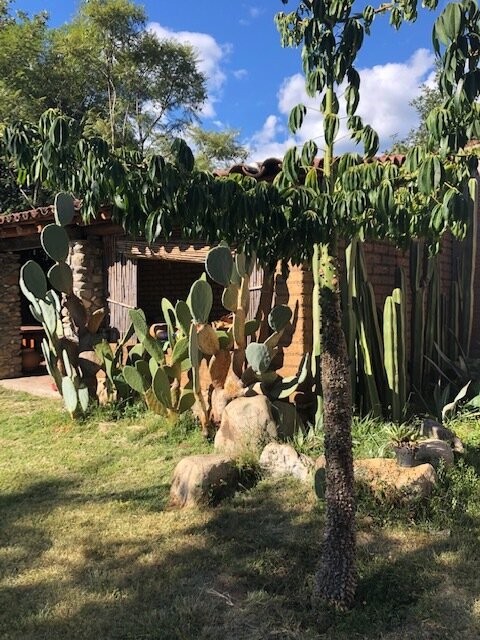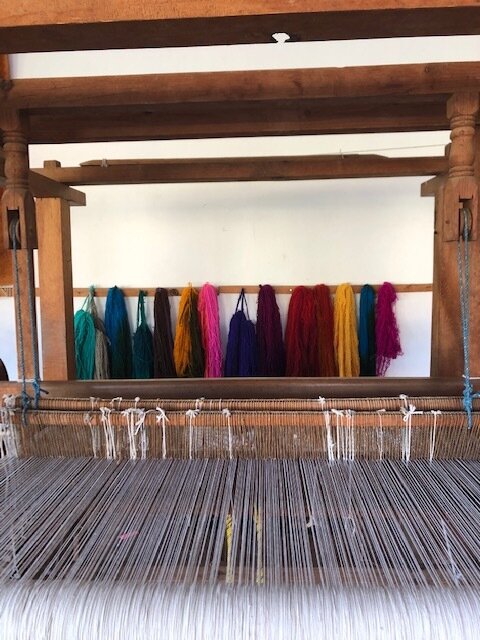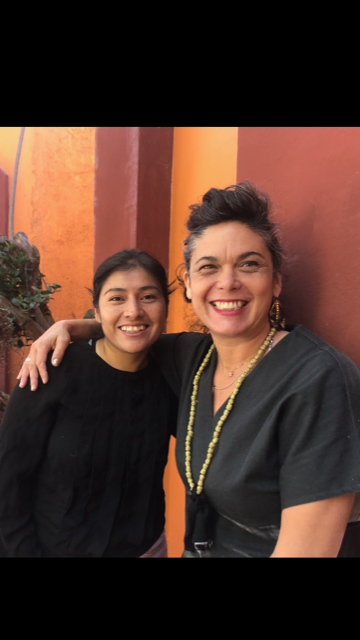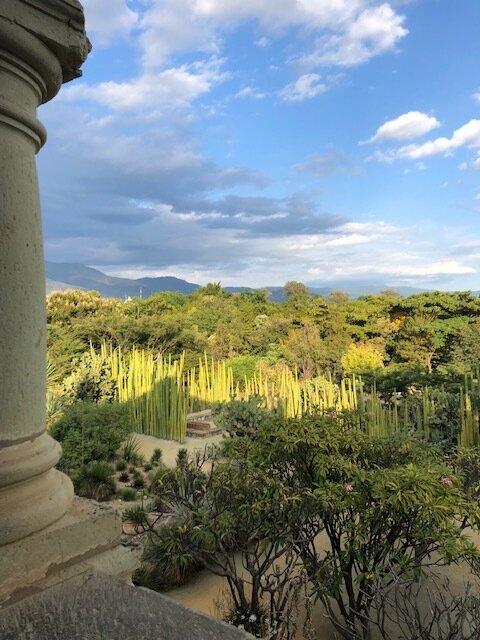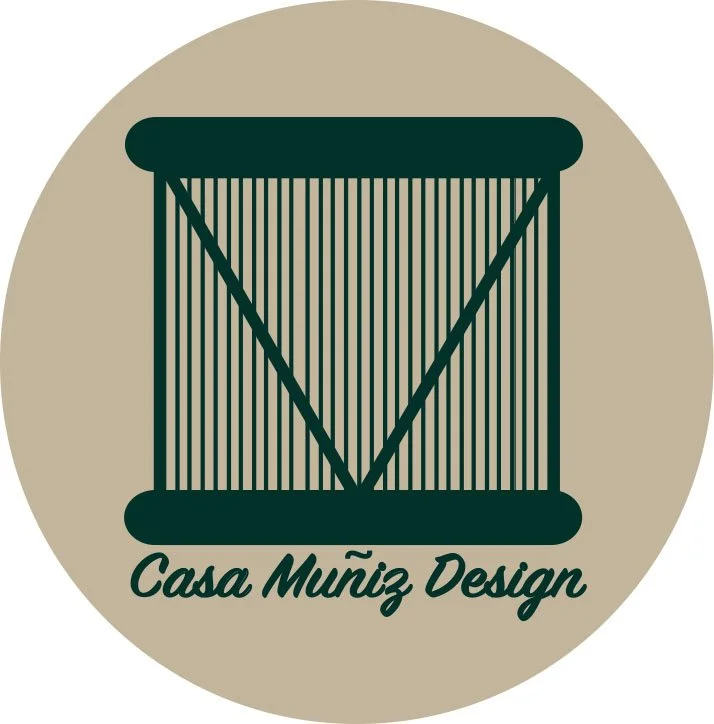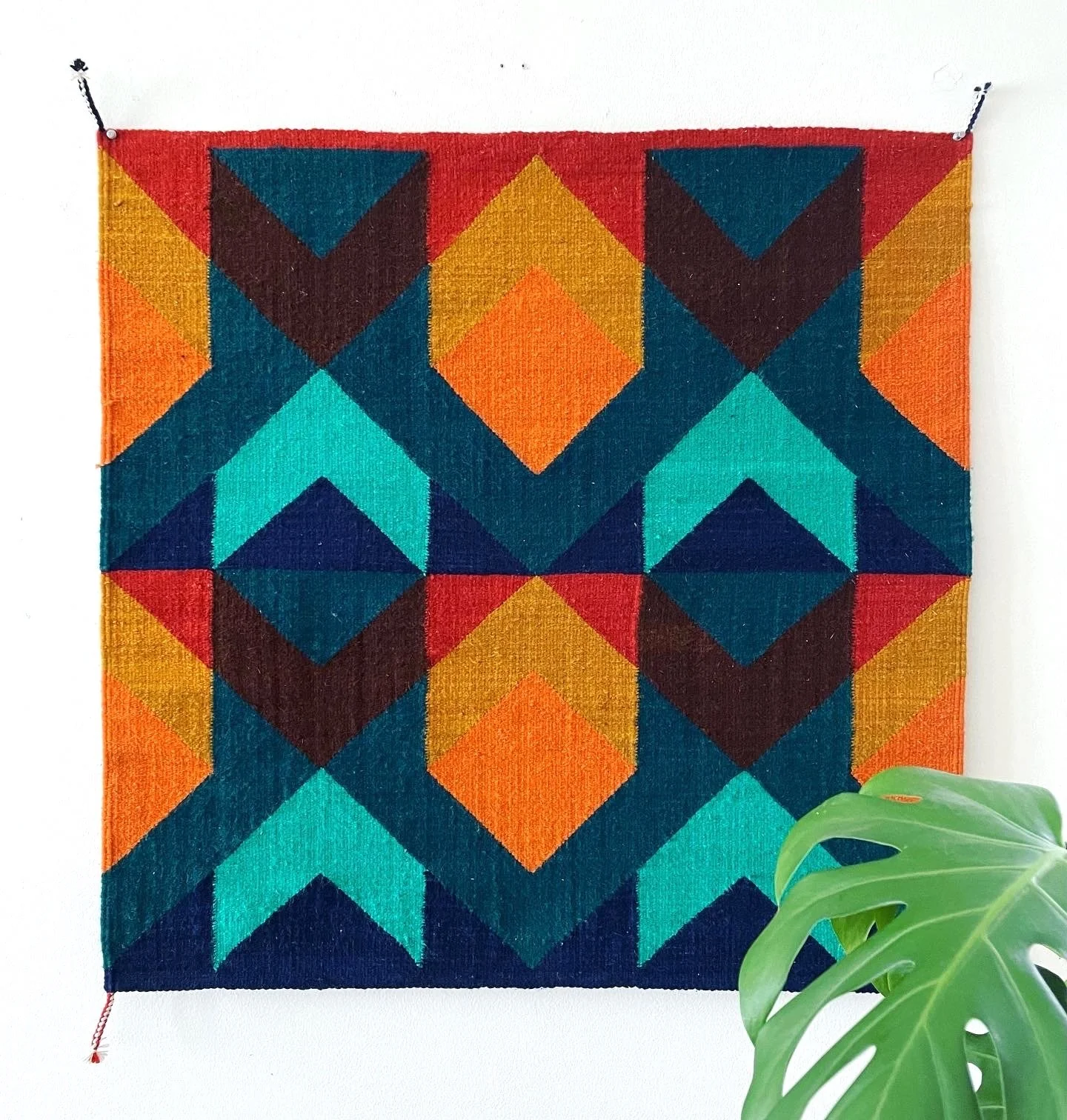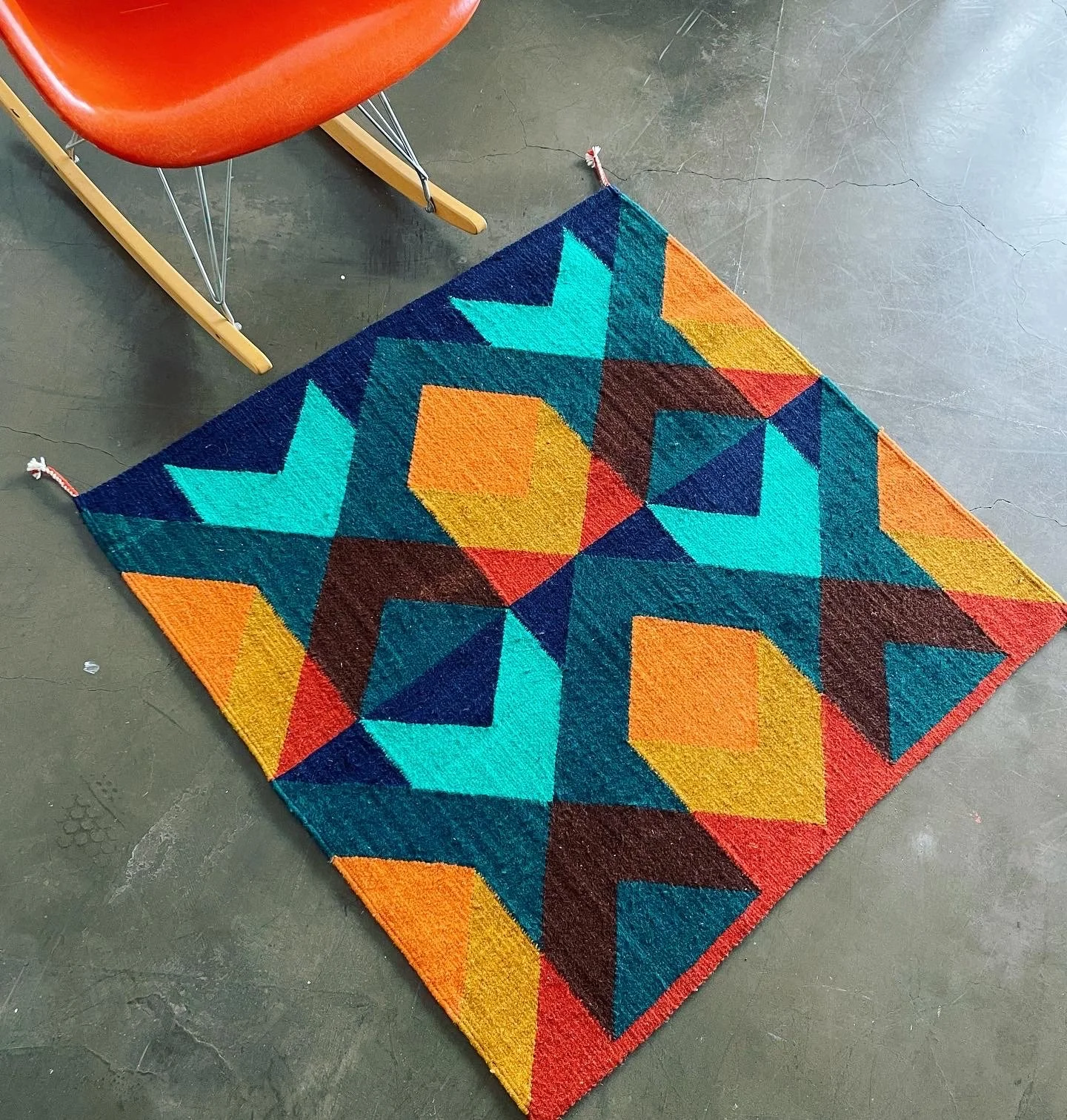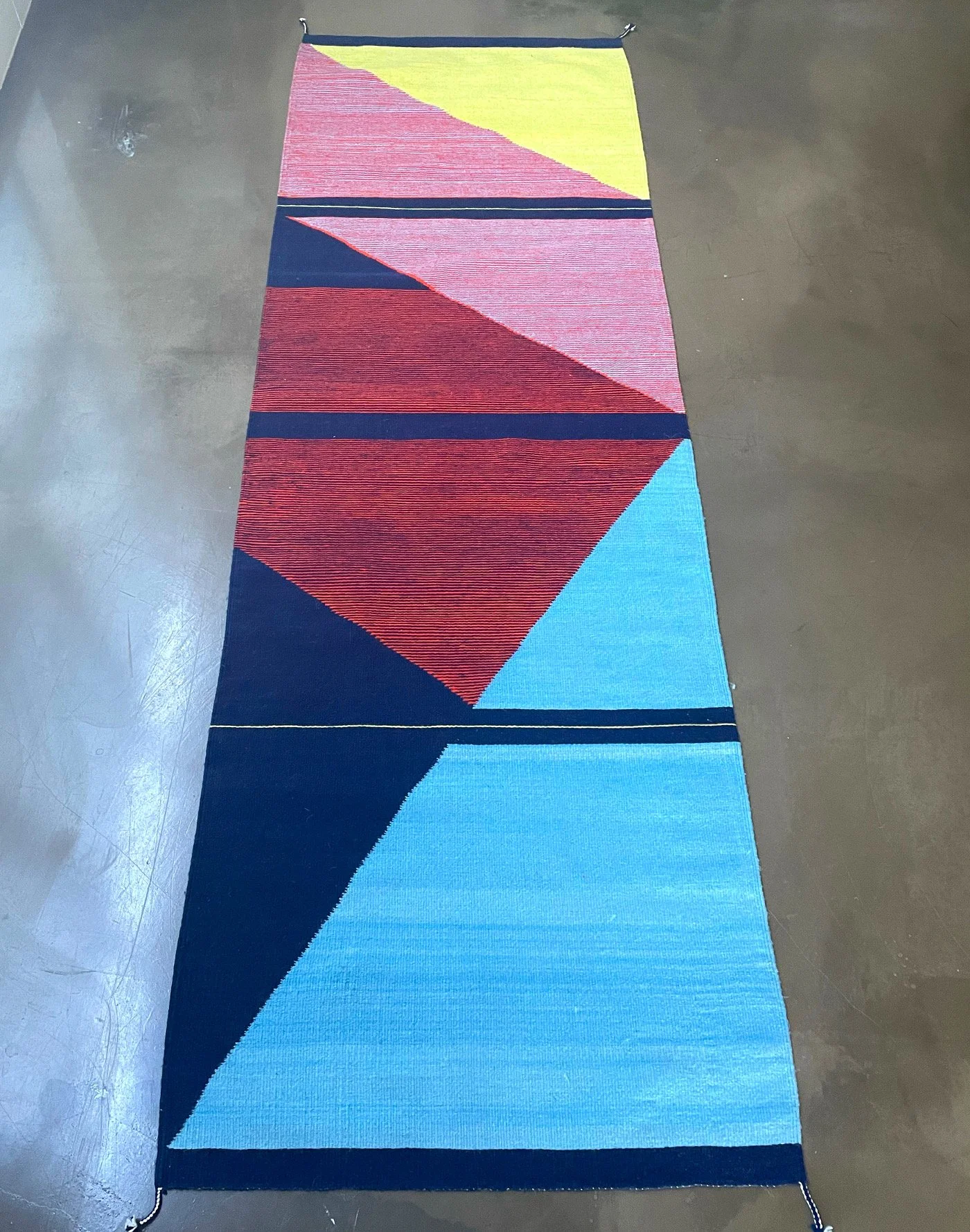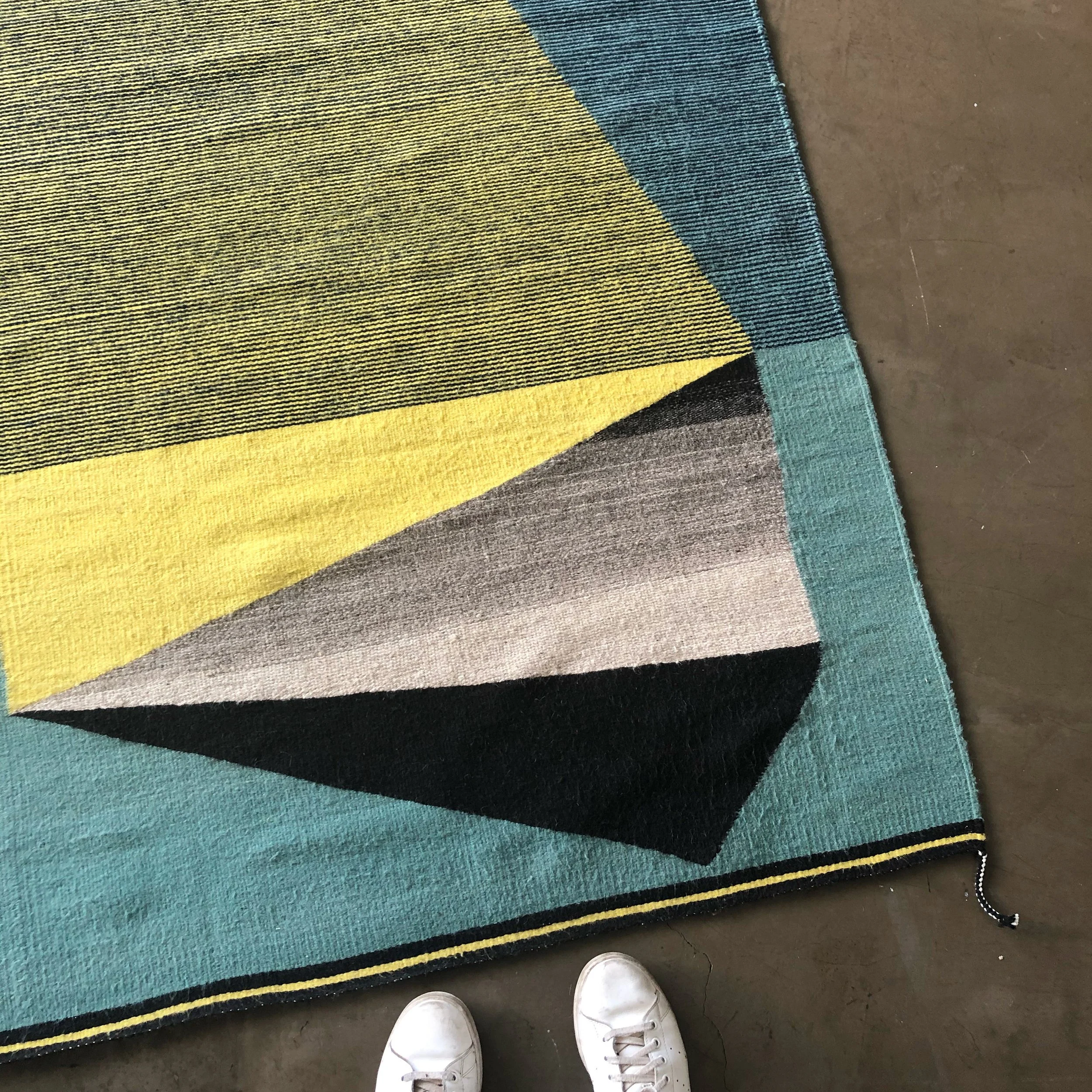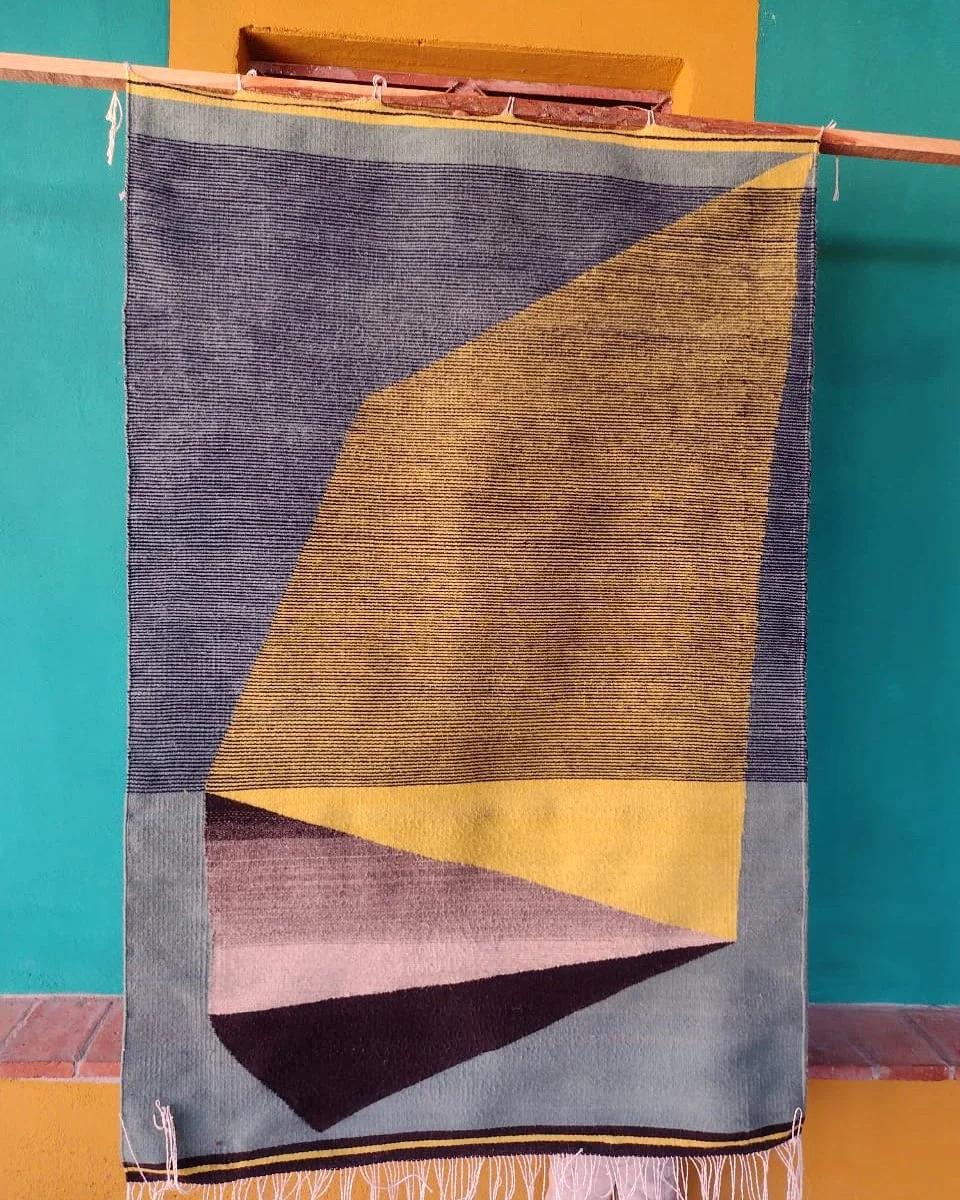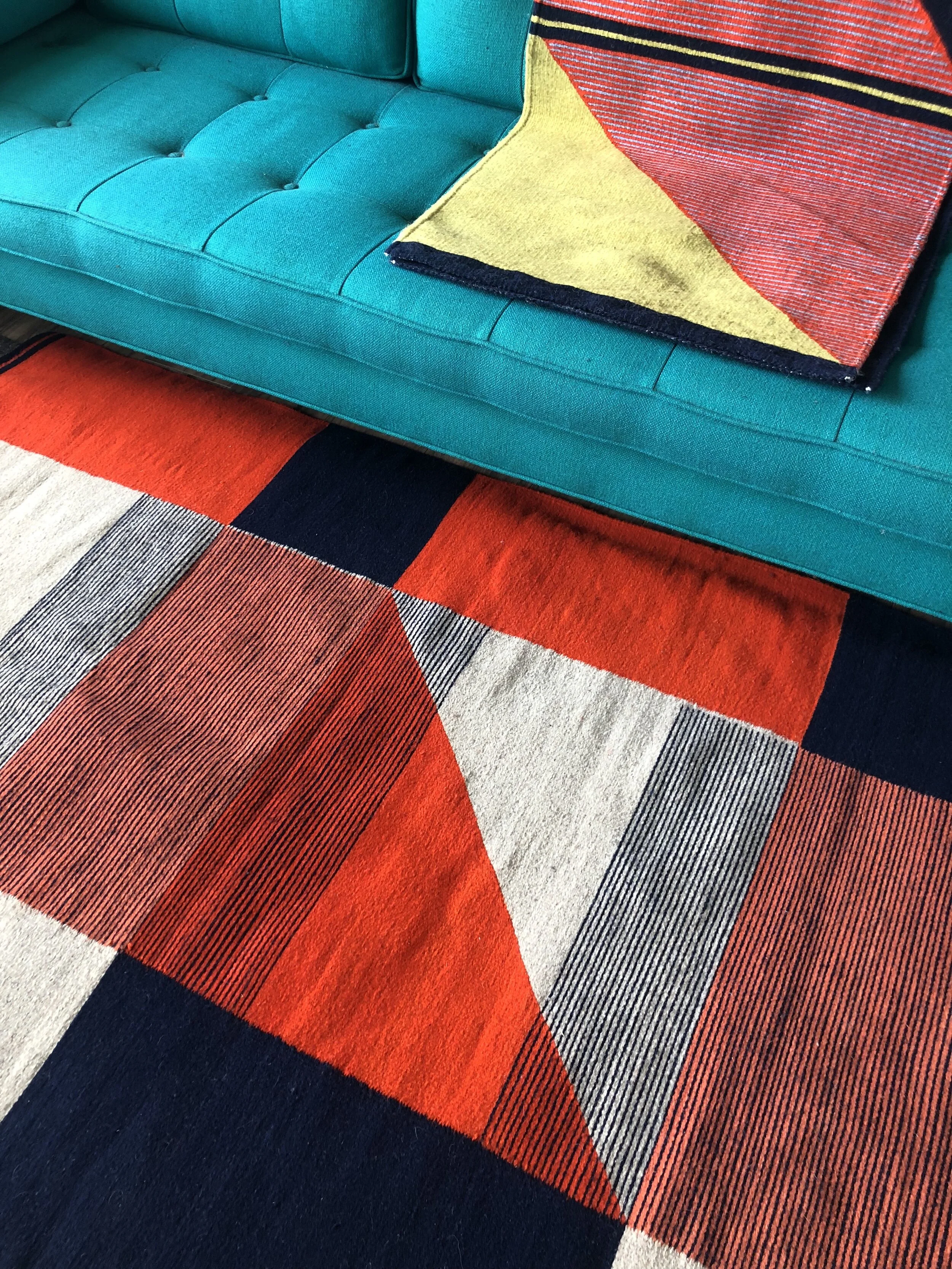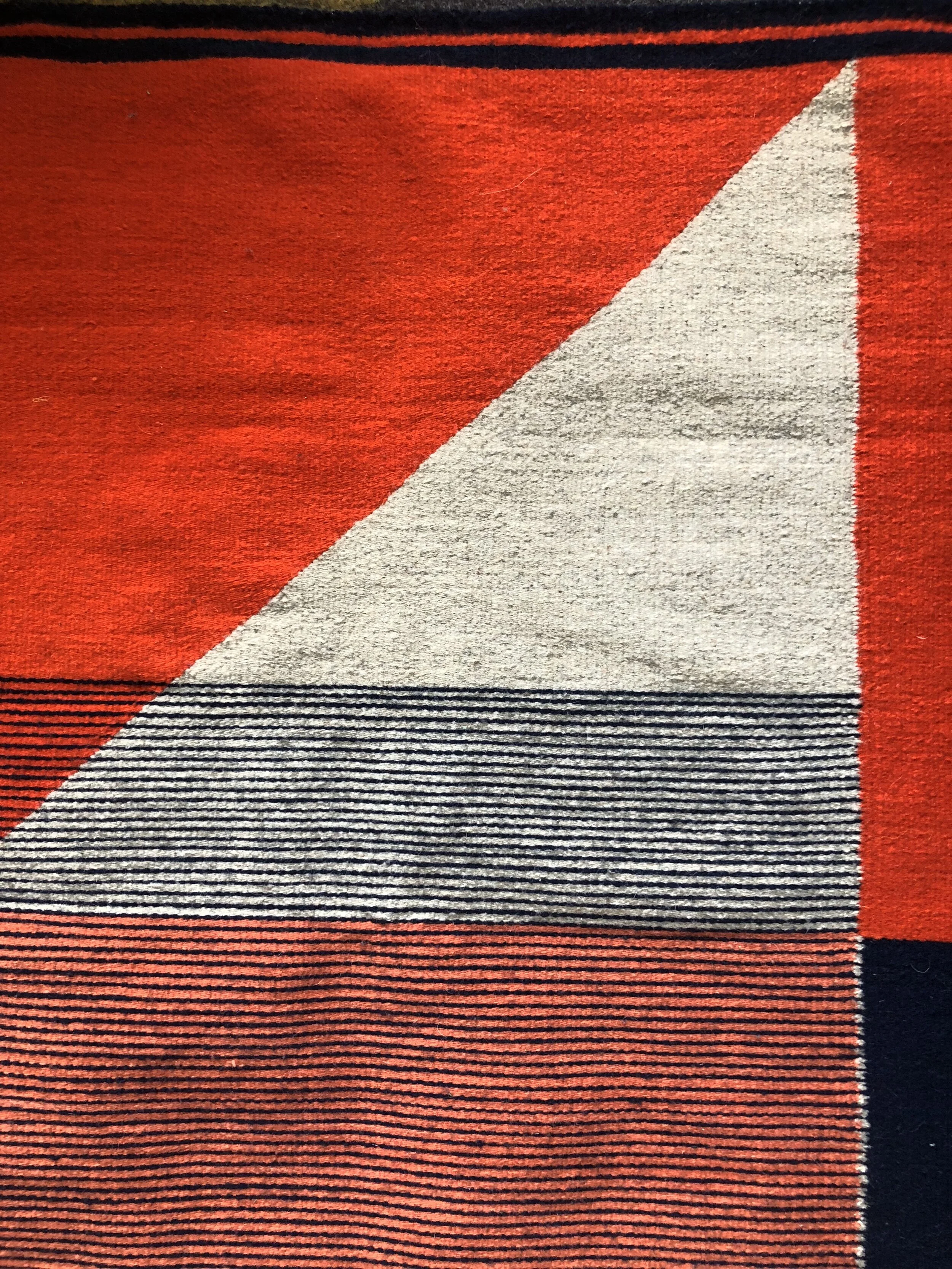
I am so proud to introduce a unique rug collaboration with Zapotec weavers, Alejandro and Malu Gonzalez of Teotítlan del Valle, Mexico- a small and extraordinary historical weaving village on the outskirts of central Oaxaca. This is a journey into the rich history of Oaxacan rugs and the culture that has sustained this tradition for centuries. Read an interview with Malu Gonzalez, below.
All of the Casa Muñiz designs are fully customizable in any size or coloration. The lead time is 6-10 weeks. Contact: melina@casamunizdesign.com
Fortuna
-
3' x 3'
-
Glow
-

3' x 3'
-
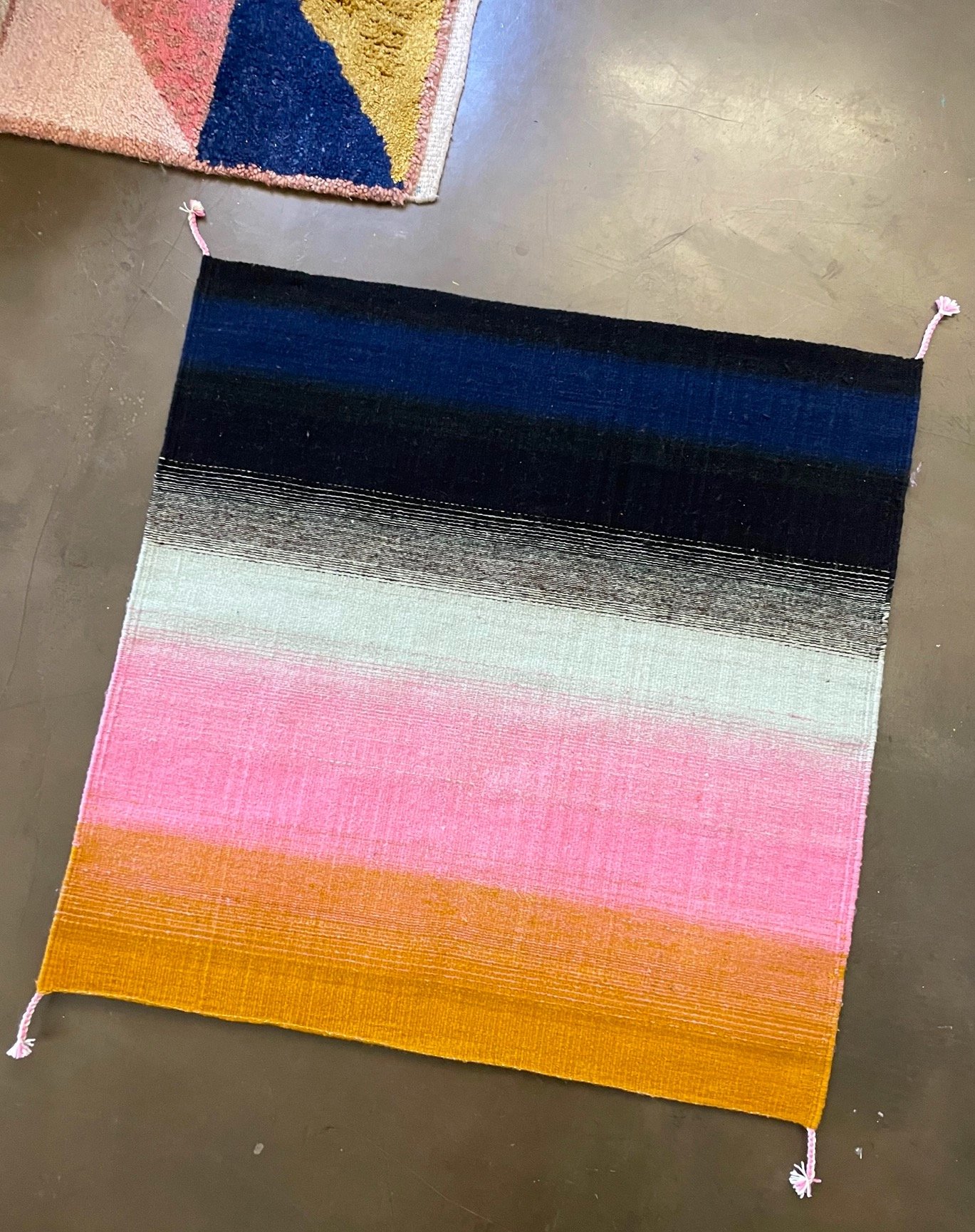
Diamond
-
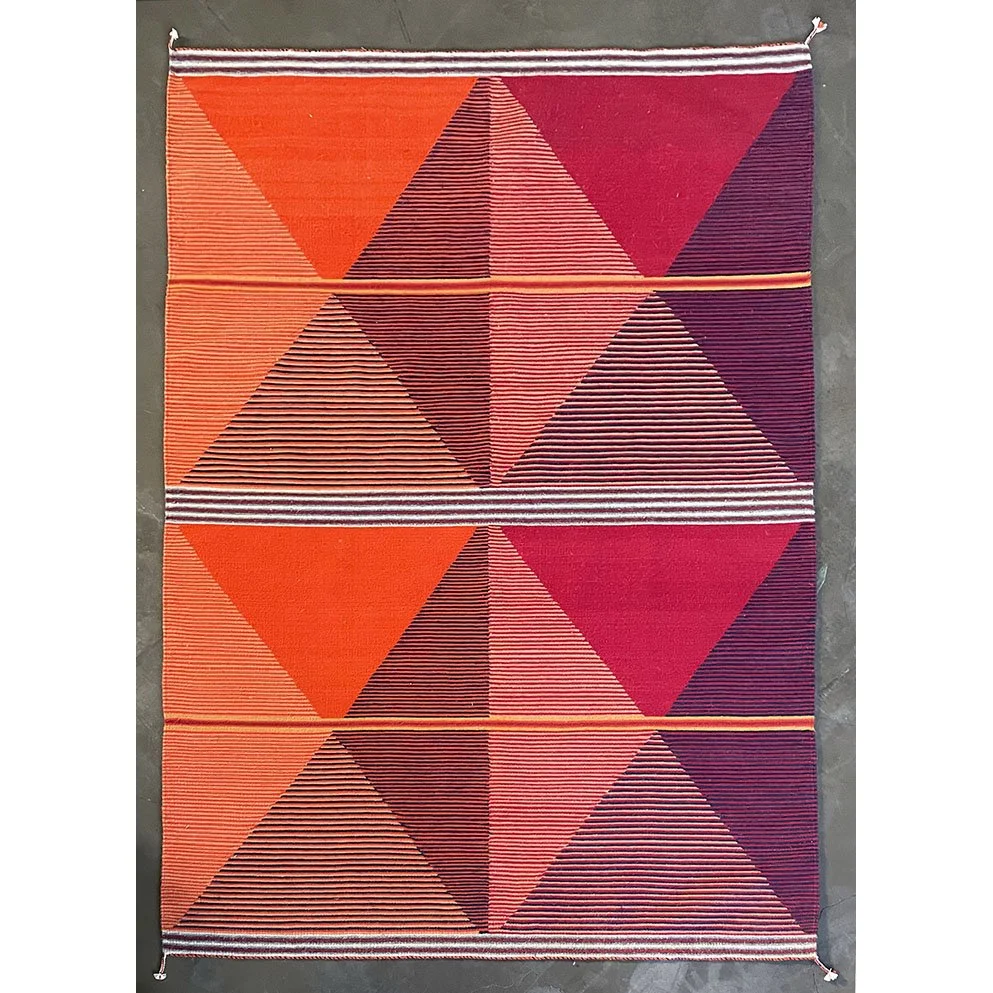
5' x 7'
-

-
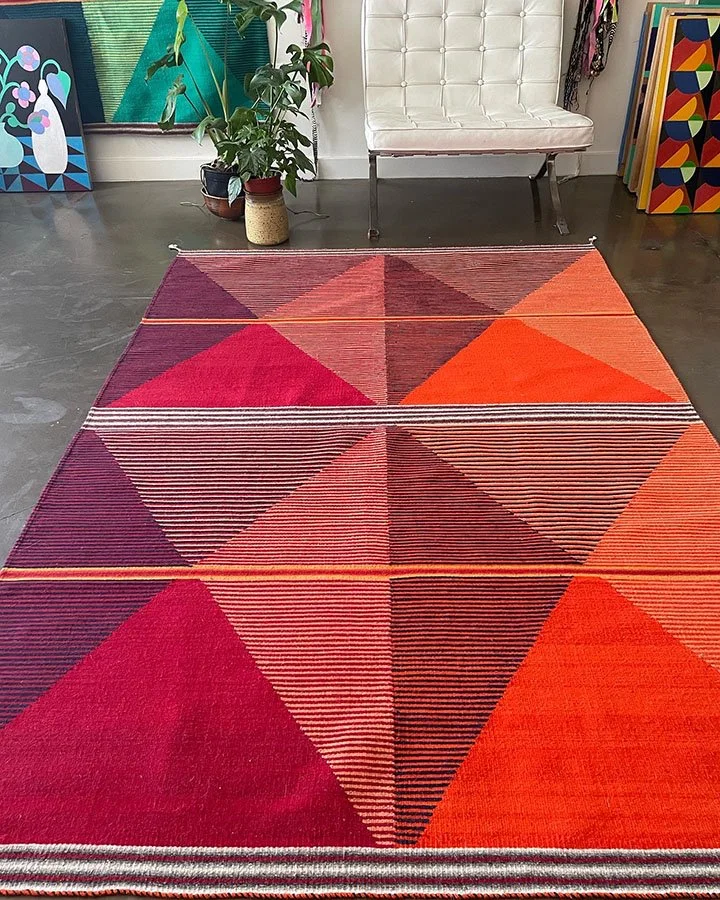
-

-
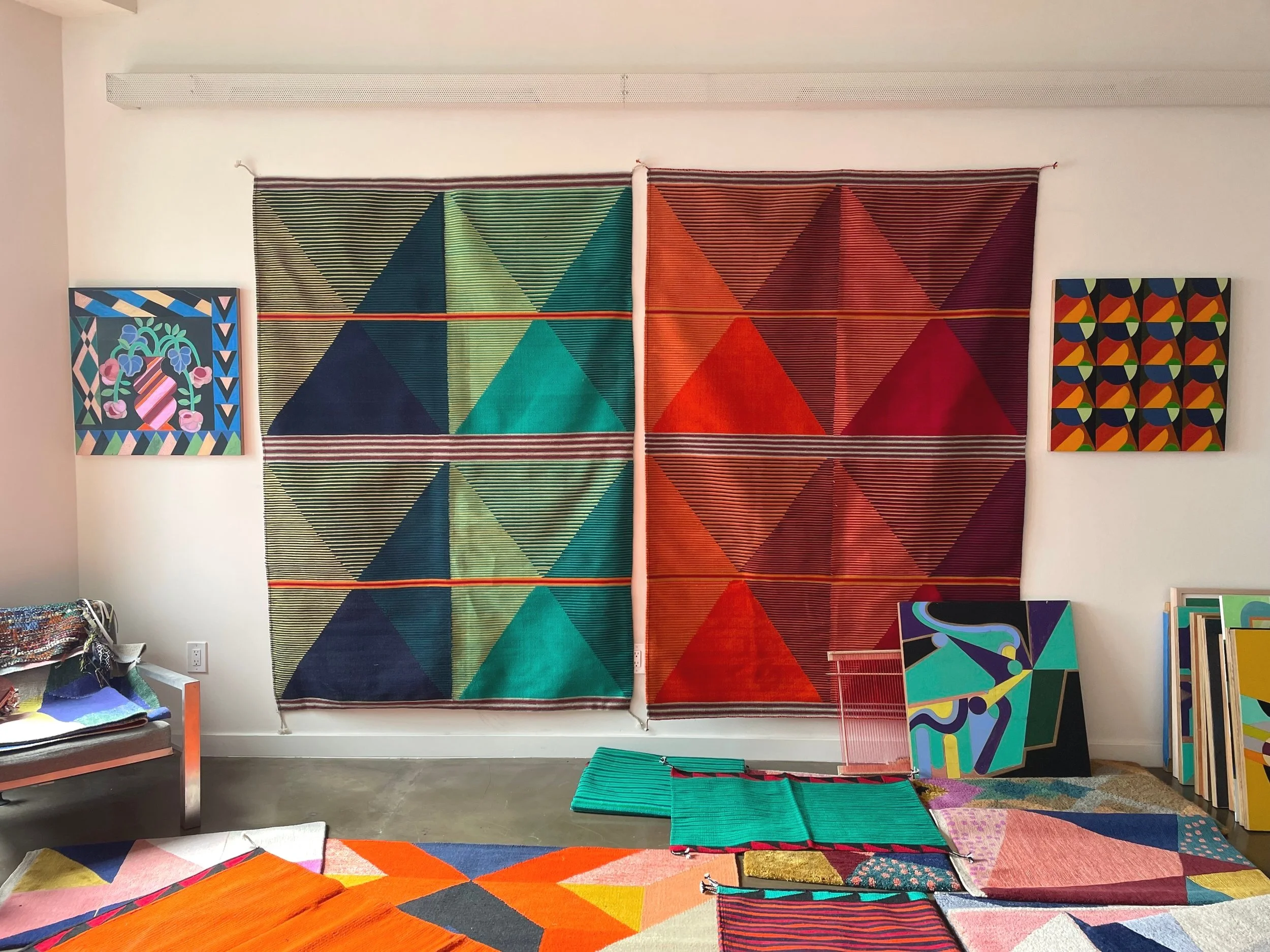
-

with the Gridcurve painting
Pillar
-

6' x 8'
-

6' x 8'
-

3'x 3'
-

Original Art Work- Pillar
22” x 30”, watercolor on paper, 2022
-

3' x 3'
-

3' x 3'
-

2' x 3'
Nahir rug
-
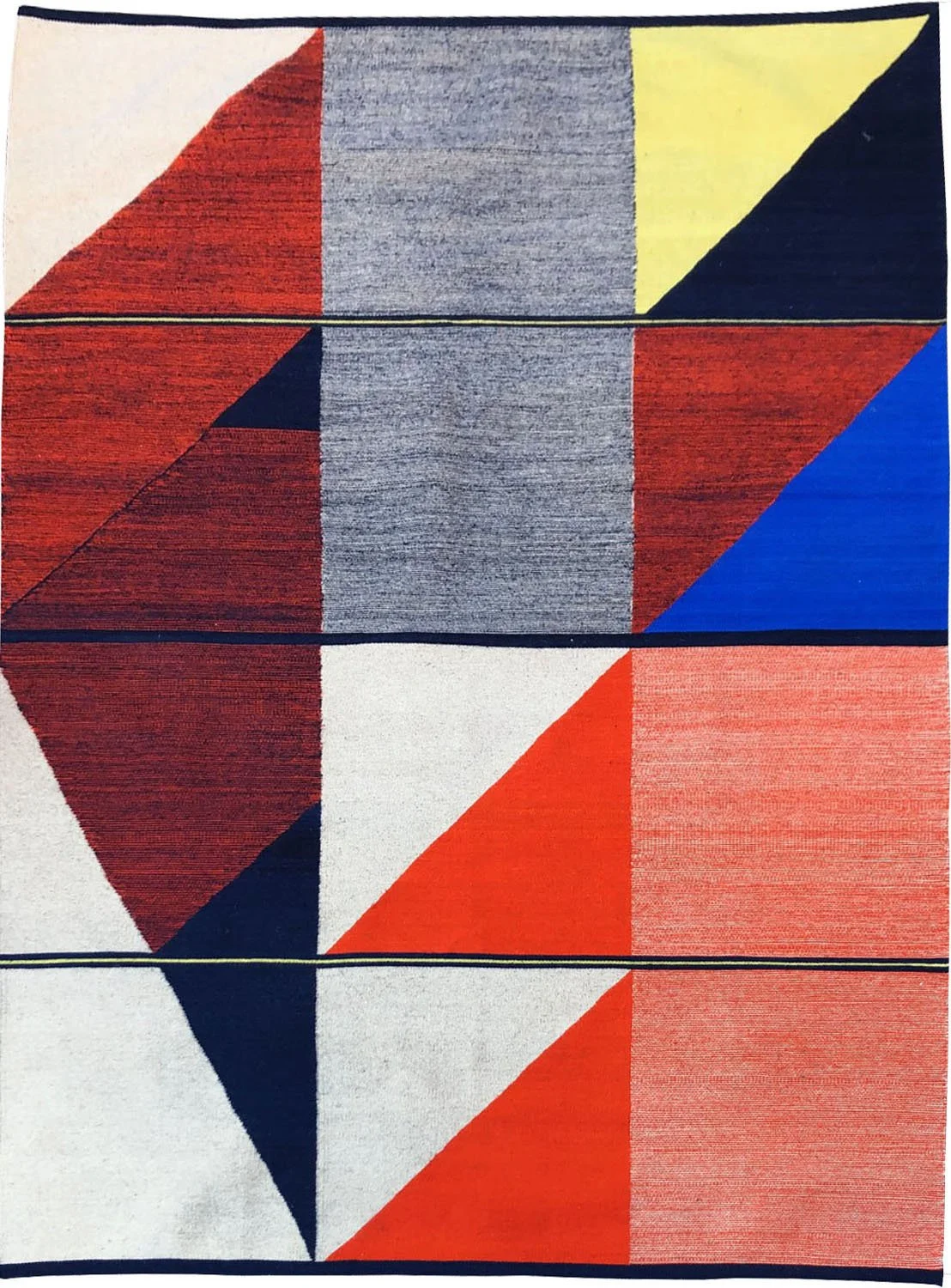
-
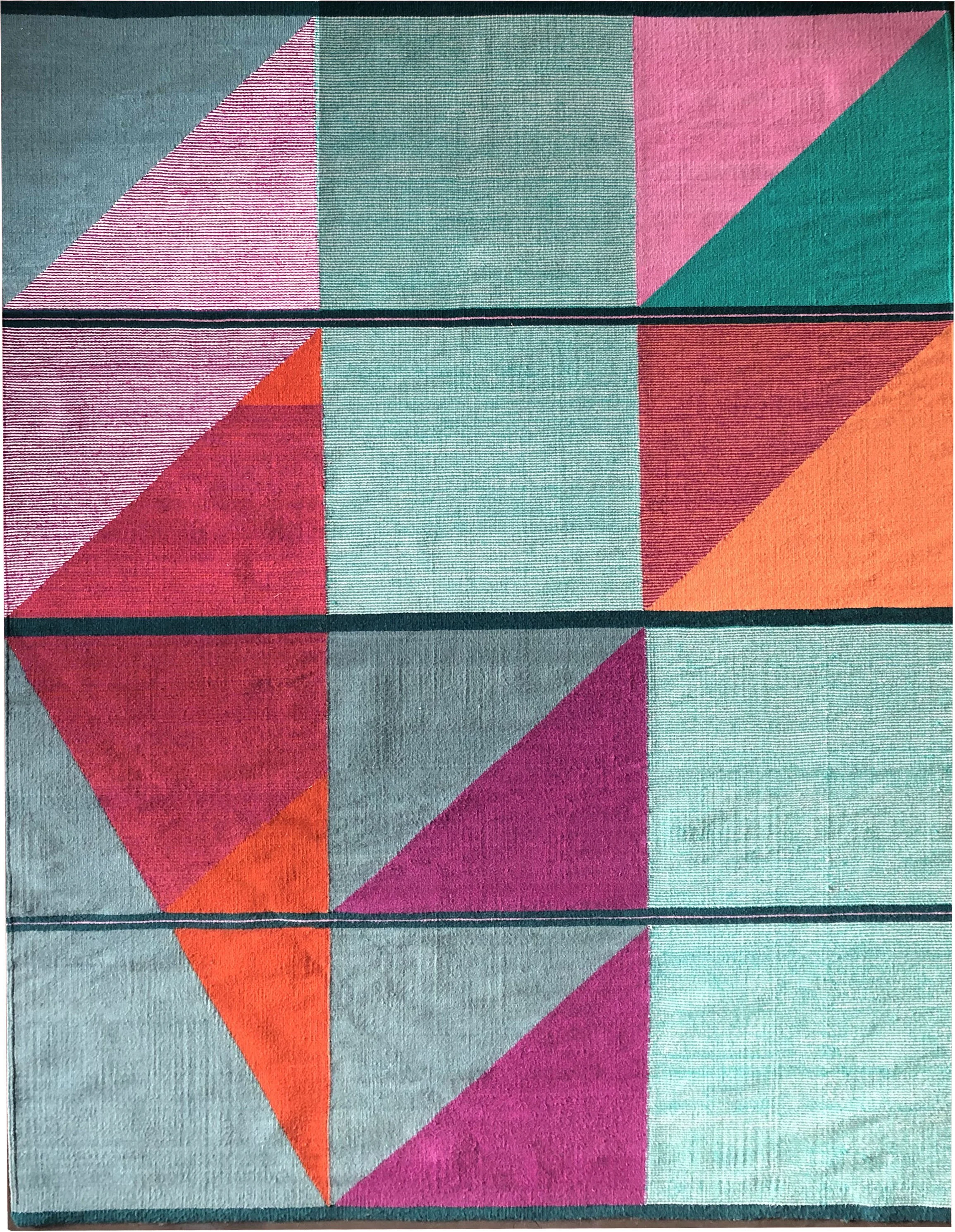
-

-
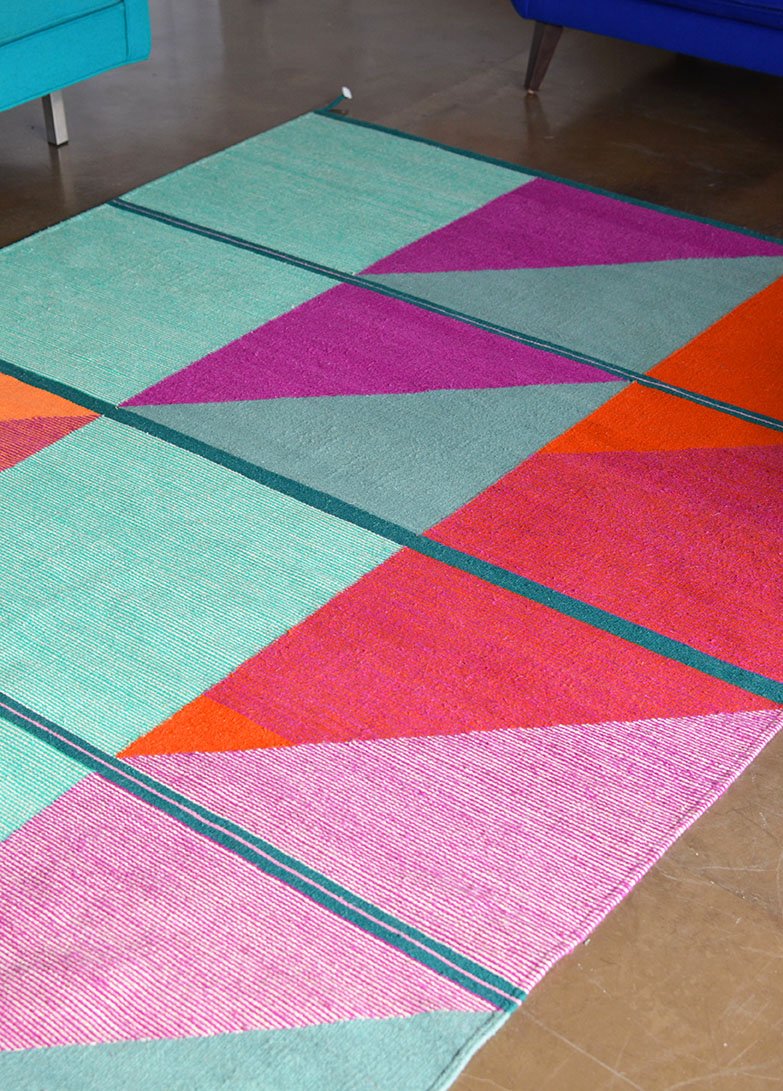
-
runner
2’6” x 8’
Stripes and Solids
-

Stripe1 4' x 6'
-

Stripe1
-

5' x 7'
-

Solid Circle 11'
-

Aguas2 4' x 6'
-

Aguas2 4' x 6'
-

Watercolor Stripe Study
-

4’6” x 5’
-

Three-color Stripe
with triangle pattern edge
Lake
-

4' x 6'
-

4' x 6'
-

4' x 6'
-

4' x 6'
-

5' x 7'
-

3' x 3' accent rug
-

3' x 3' Wallhanging
-

Source Art
-

4' x 6'
Teo
-

6' x 8'
-

-

Valley
-

5' x 7'
-

-

-

4' x 6'
-

-

5' x 7'
Quilt
-

6' x 9'
-

6' x 9'
-
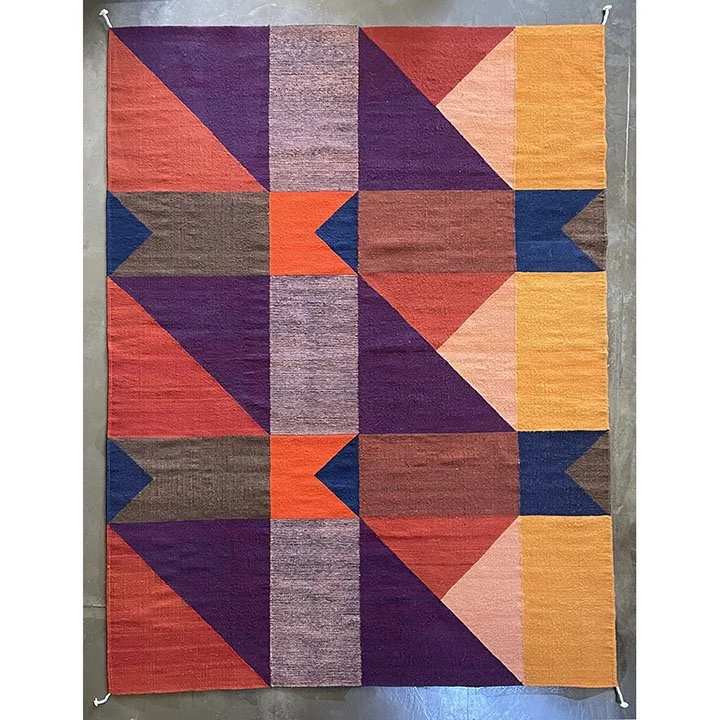
6' x 8'
-
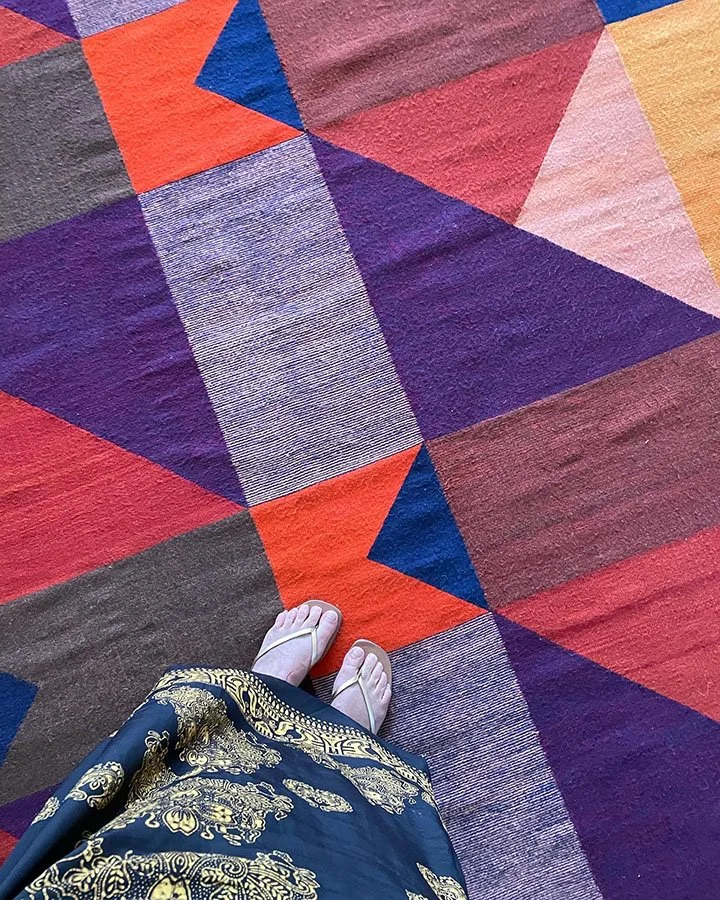
-

-

-

-
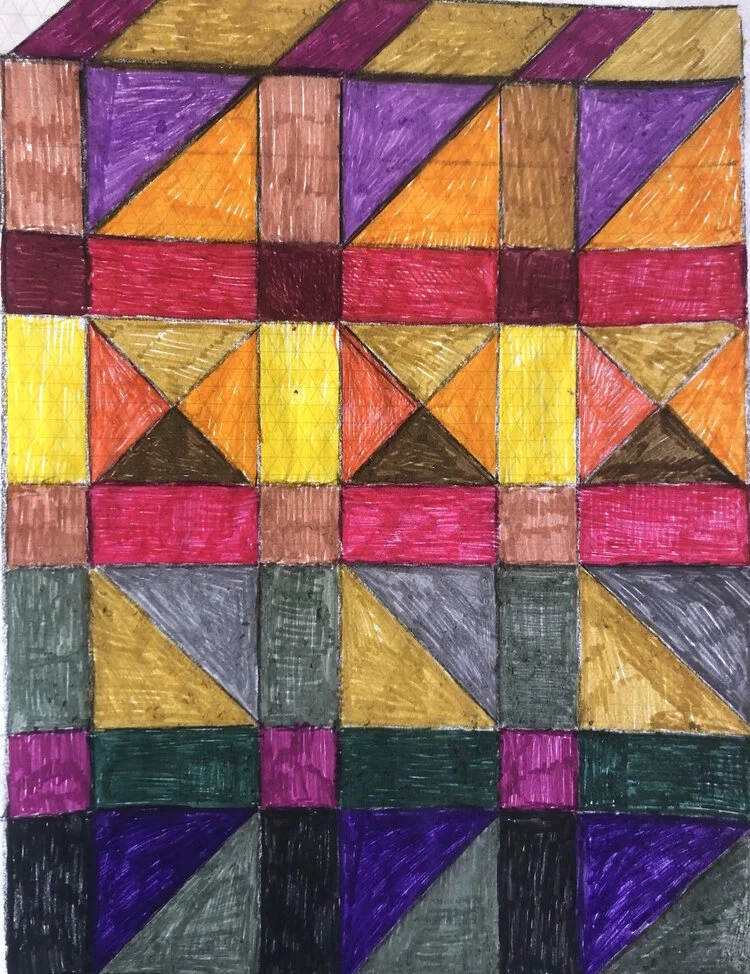
Lighthouse
-
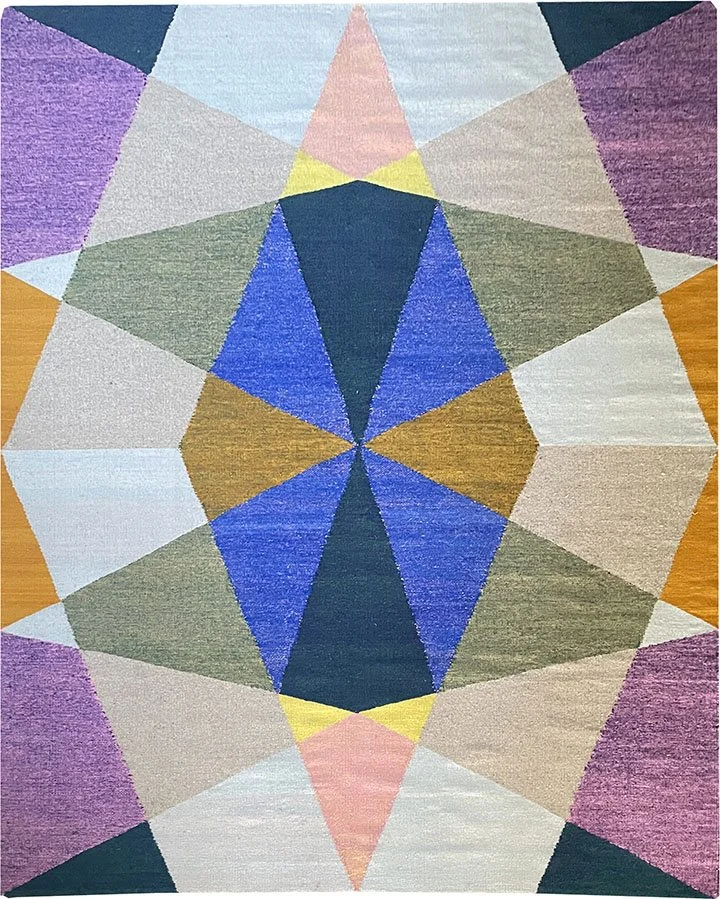
6' x 8'
-
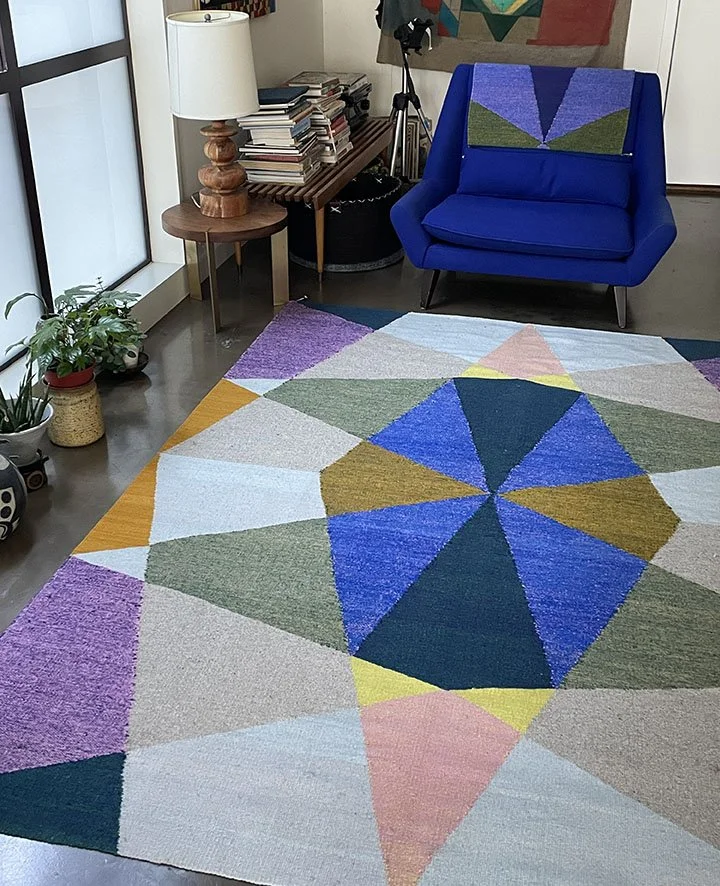
-
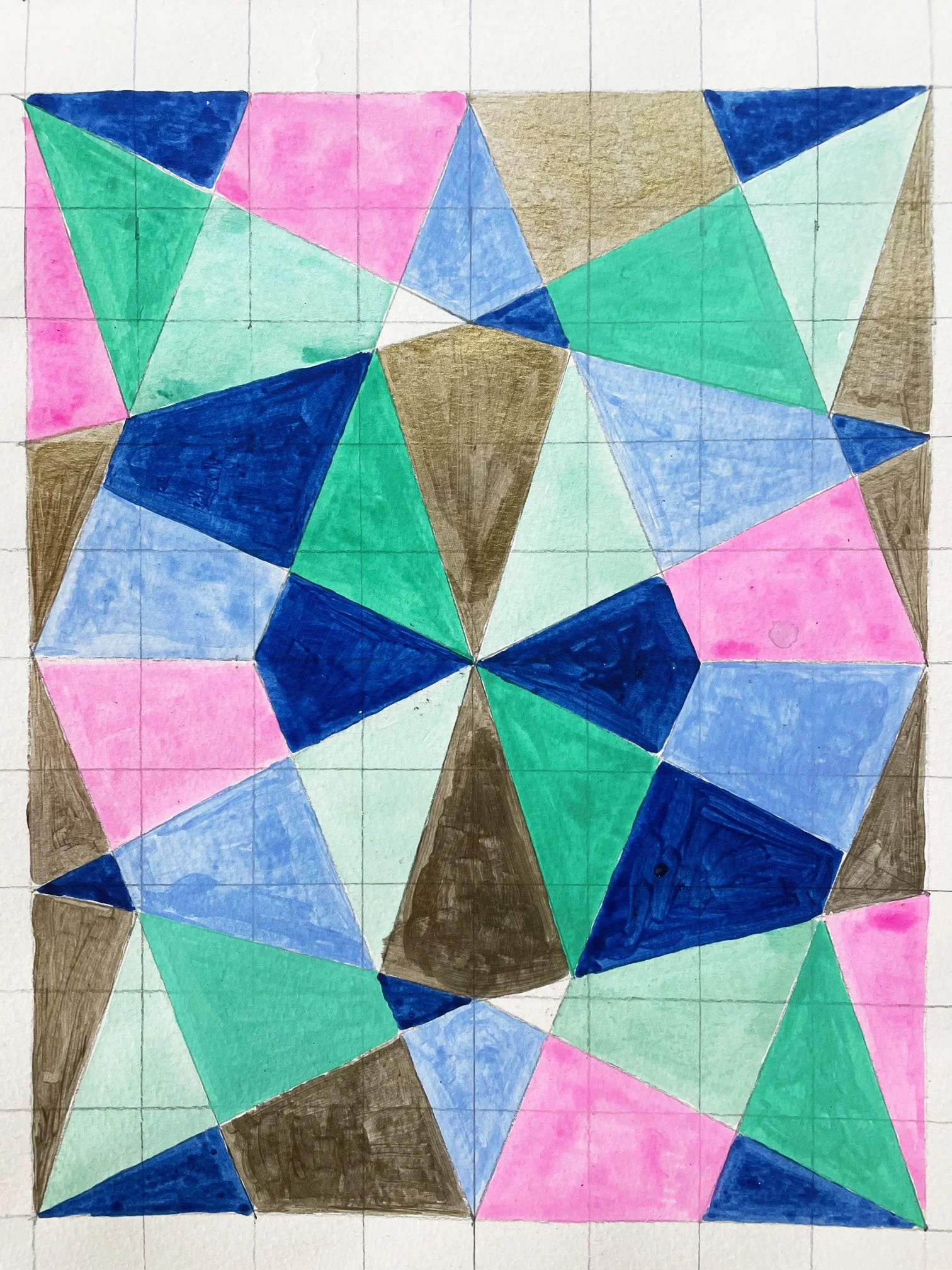
Source art sketch
Landing
-

-

6' x 8'
-
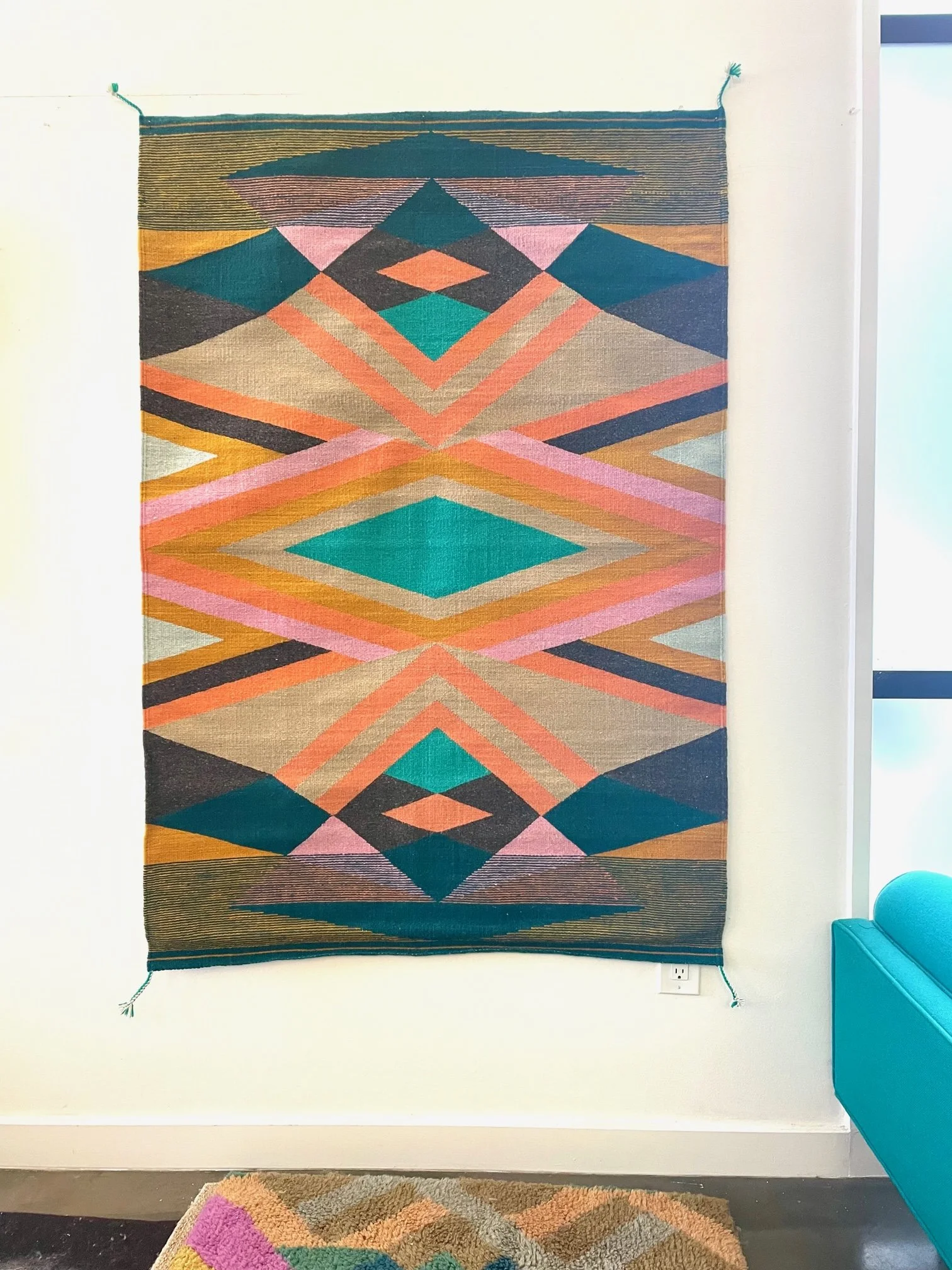
-

Landing Source Art
Prism
-
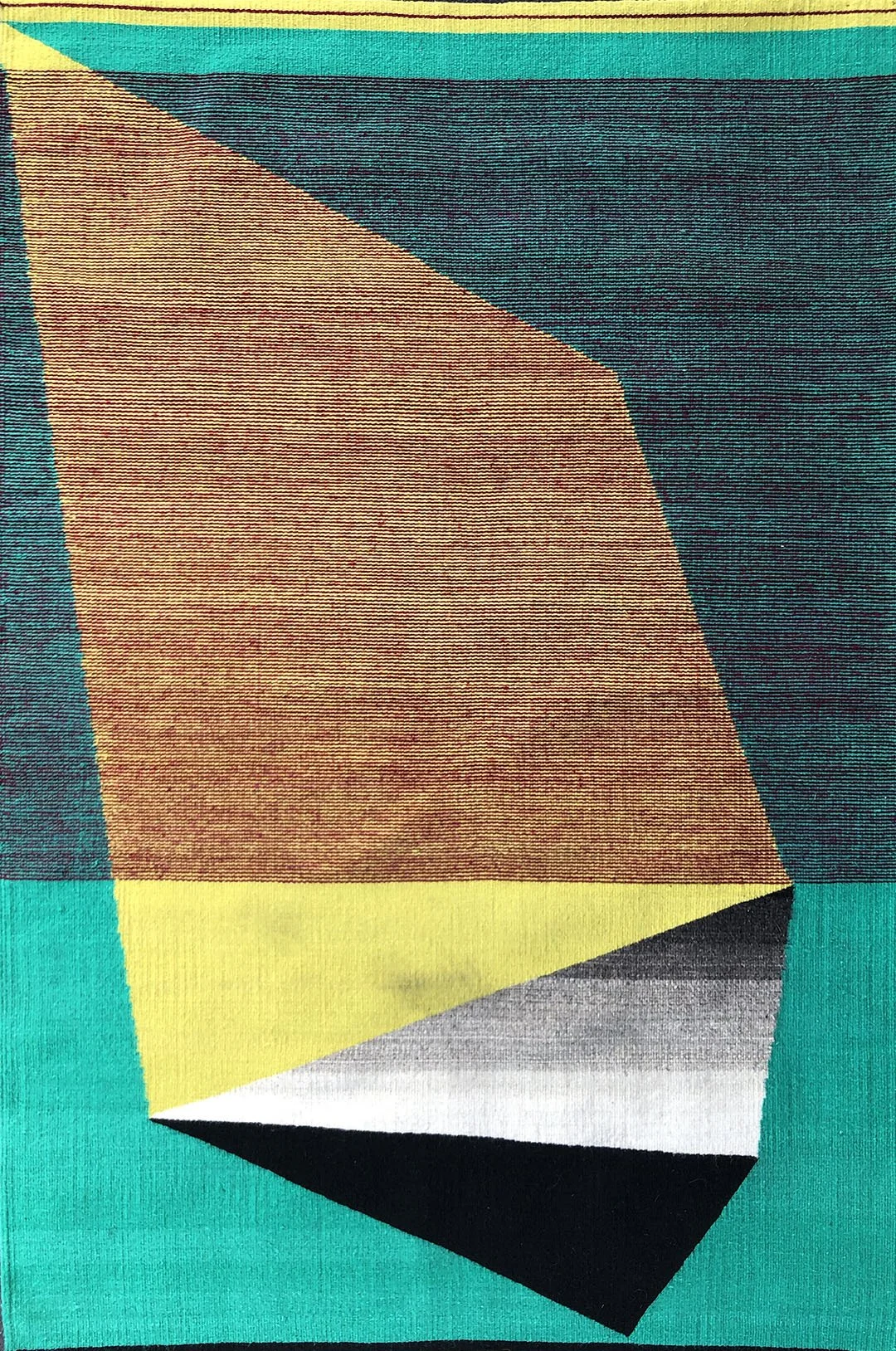
4' x 6'
-

-
-

-








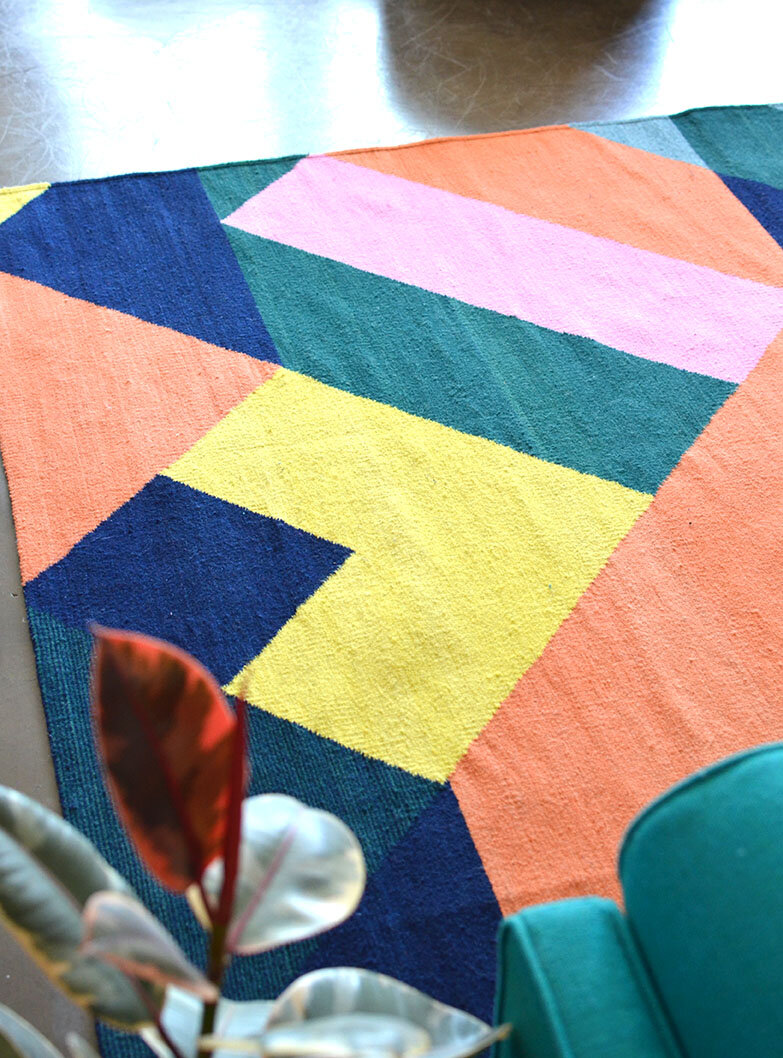
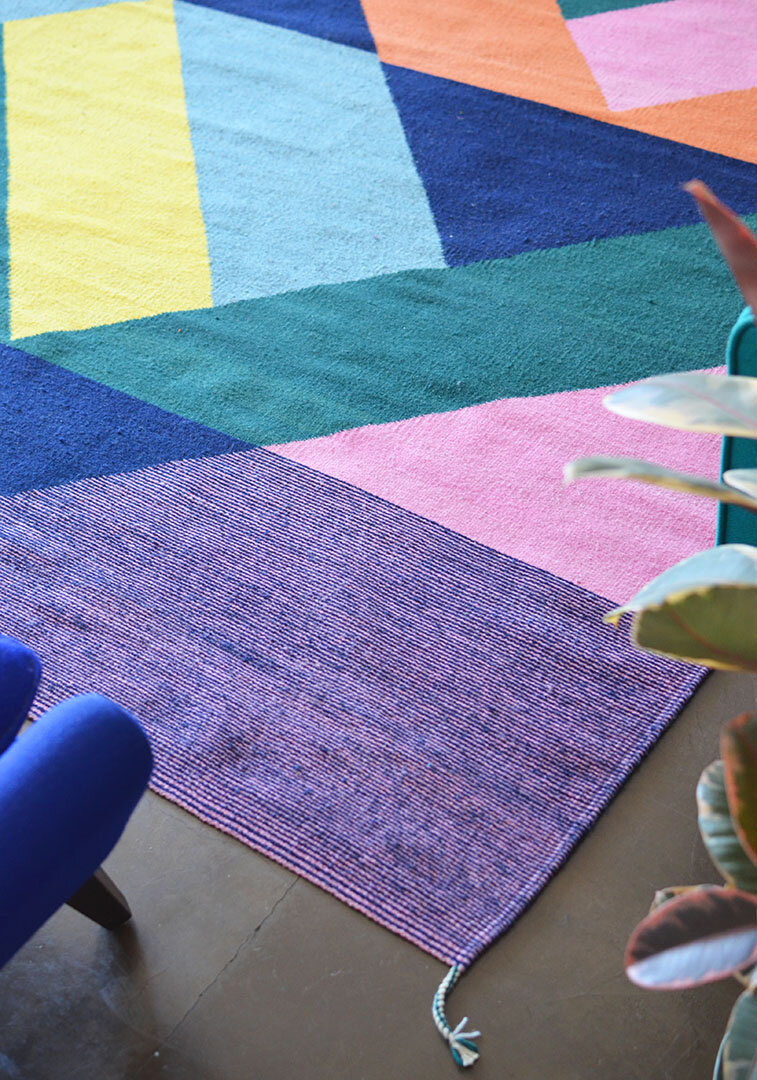
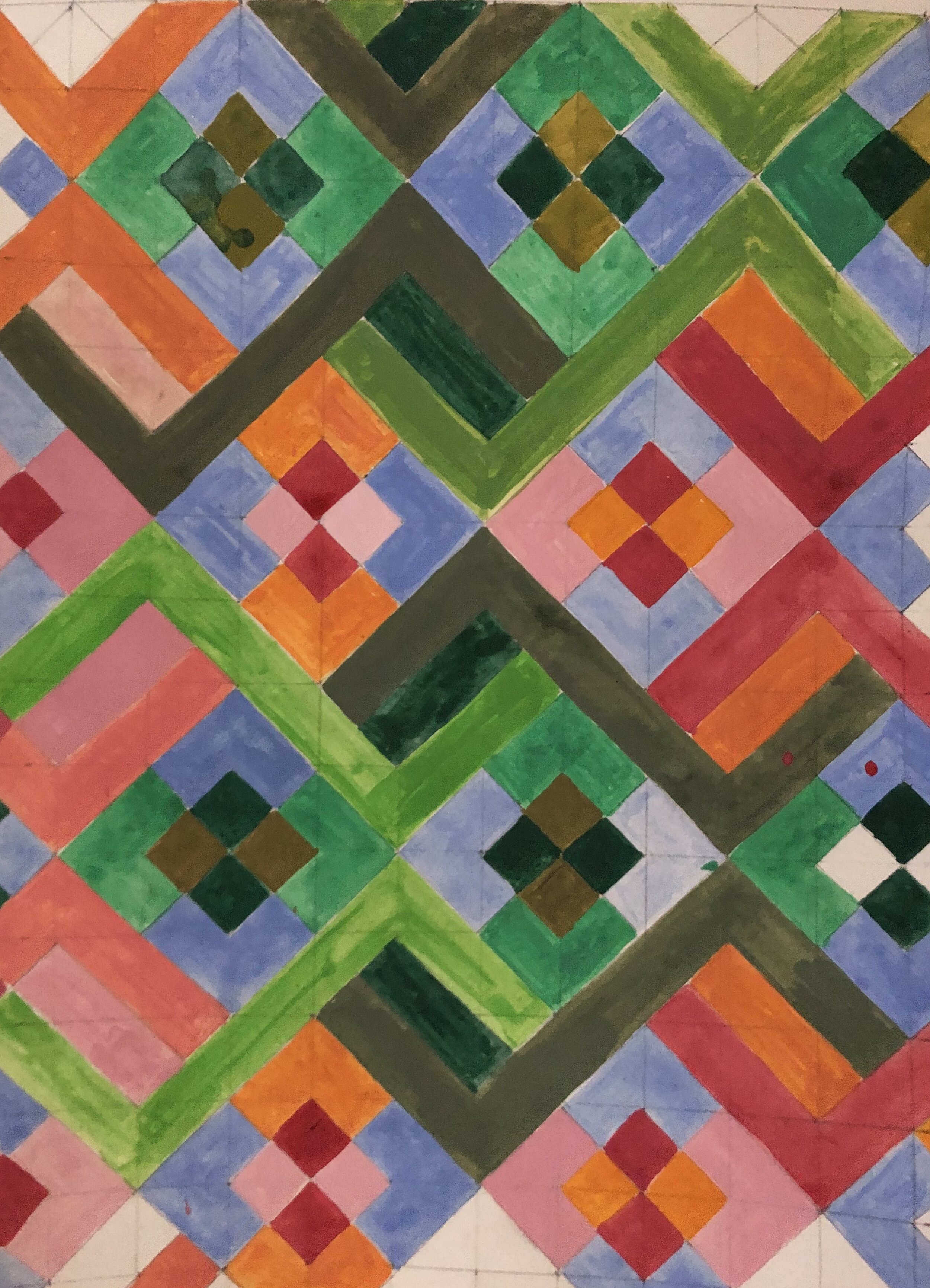
Frida source art gouache on paper 2021
Interview with Malu Gonzalez by Melina Finkelstein
Q- How long has your family been involved with weaving rugs in Teotitlán del Valle? Tell us a little about your family history.
A- My family has been making rugs since I was born. When I was a little girl of five-years-old, I remember my father weaving a big Navajo rug and I remember playing in the loom at the pedals. Now I am thirty years old. My father began to weave when he was twelve years old. After my father passed away when he was 67, my mother didn’t weave even though she knew how. In that time when she was growing up the women usually helped to card the wool, spin the yarns, make the skeins of wool, dye them, prepare the natural dyes if it needs to be ground on the metate, the rock that we use to grind the corn and make tortillas. We use the metate for grinding leaves, bugs like cochinilla and all the plants that we use for the dyes. My mother grew up so poor so she didn't go to school. She doesn’t read or write. She learned to dye and prepare all the necessary ingredients for weaving. My mother knows everything from collecting the wool from the sheeps and she even wove a rug when my parents got married. They started to weave Navajo rugs which my family is especially good at. They are masters of this type of rug making. I remember me making canillos for papa when I was eight years old. We made a big basket and when I was five years old I remember cleaning the wool when we took it from the sheep. It smelled terrible but when I was a little girl it was so fun to play with the balls of dried sheep poop glued to the wool with my brothers. My parents were so demanding with us even though we were kids. They taught us every process for making a rug really well, because this ensured that when the clients came they would take a rug and everyone in the family would have a reward, a big sweet popsicle. While I was growing up my parents taught me to weave. When I was eleven years old I made some rugs that were 60x100 centimeters.
Q- Where is the wool from? What makes it unique?
A- The wool that we use we collect from our five sheep. If we run out of wool we go to a neighboring town like Macuilxochitl, san Baltazar Chichicapan, for example, and also we can buy skeins of wool in Teoltitlán de Valles. We check the quality and consistency of the yarn. It has be optimal for dying because the wool is subjected to high heat temperatures.
Q- What plants are used to dye the wool?
A- we use a lot of plants and we collect it depending on the weather. We use the leaves of nut tree to get different shades of brown and beige. Bugs like cochinilla is used to make reds and we do a little chemistry oxidizing with lemon or baking soda. Dying is an art. It is like a magician making potions. For me it is like cooking a good mole. The color needs be unique. We don’t have formulas for each color. Each color we dye is unique. That's why each rug is unique.
Q- What is your favorite part of the process?
A- Sincerely we don’t have a favorite part of our job. We do it to support all of our family and because it is a gift from our ancestors. While I grew up, I learned to love our work because all the time that we spent weaving, dying or just cleaning the wool is enjoyed with the family, with our grandmother or grandfather eating a fruit enjoying the hard day of washing the skeins of yarn or talking about good news in the family weaving on the loom.
Q- What is your vision for the future of Teotitlán de Valles and what role do you want to play in that future?
A- For my lovely Teotitlán: I love my community because we preserve our traditions and our rules. When you are growing up you learned to respect our elders. When you greet, you greet kissing their hand. I would like see to our town showing the world our culture, our art, our customs but never changing our identity. I am the mother of twin boys and everyday I try to educate my little ones to be more humane and supportive and every day work well with my husband and support him if one day he has to give his tequio* to the town as is custom with the men in our community.
*(an indigenous person's desire and obligation to assist their community)
